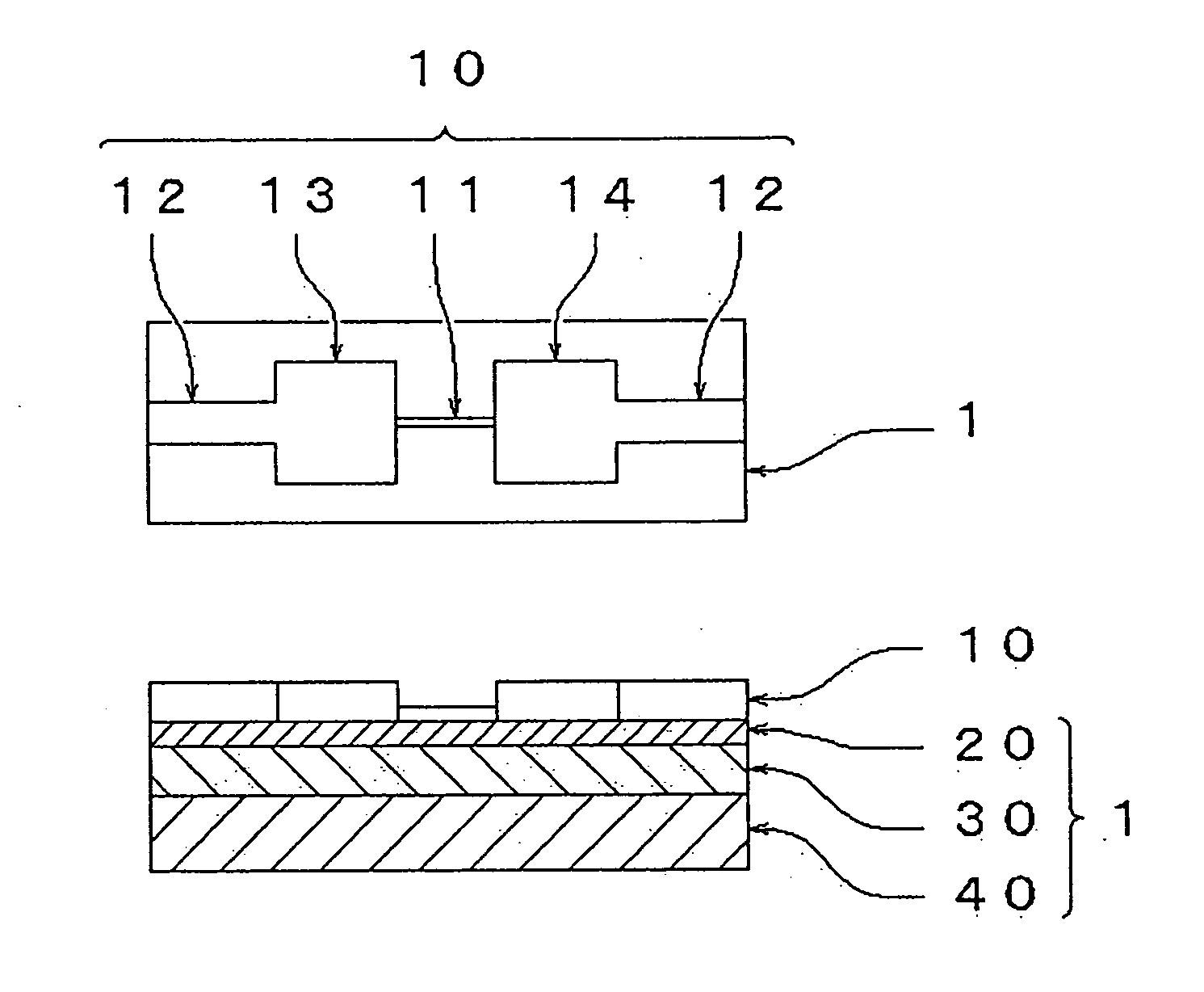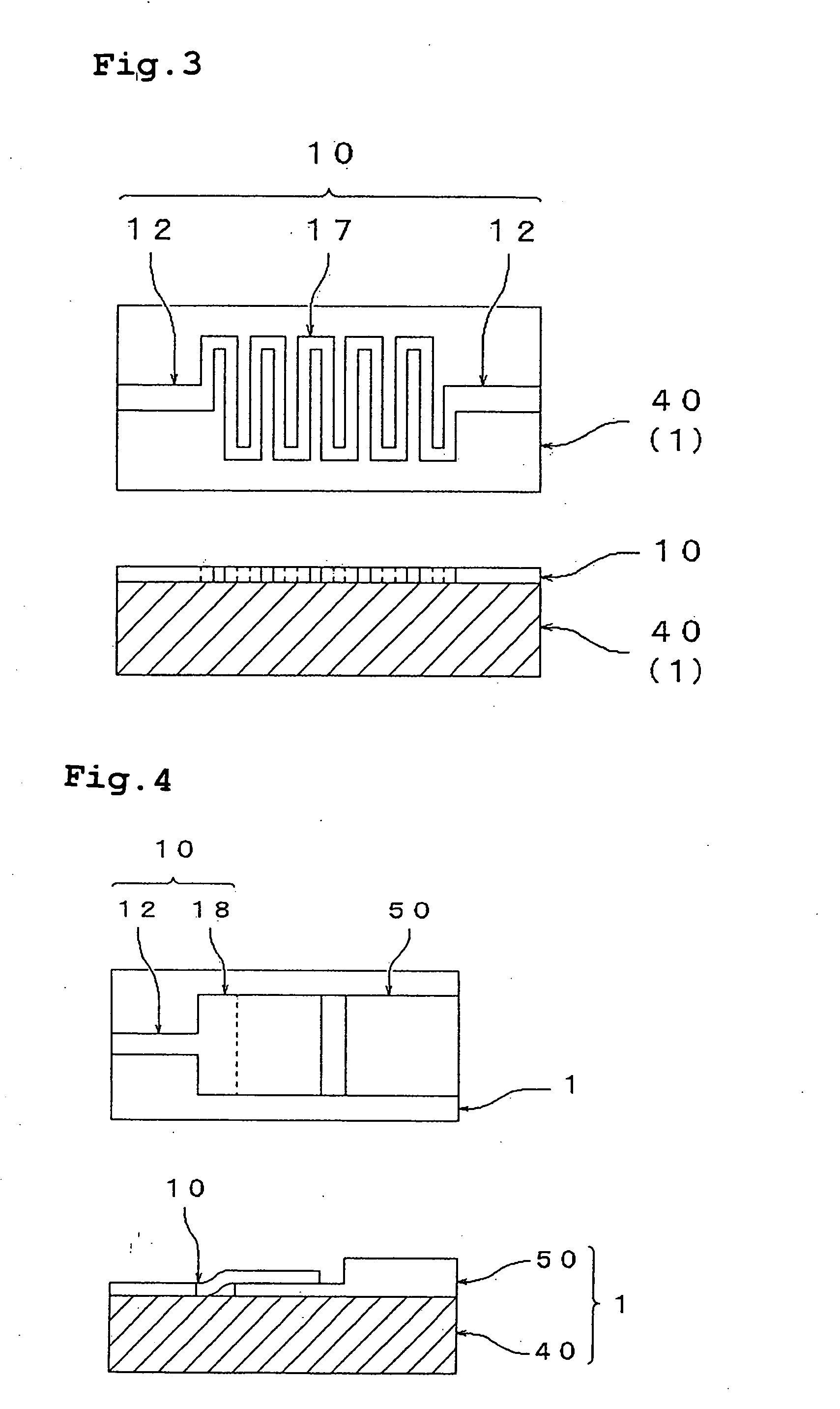Structure matter of thin-film particles having carbon skeleton, processes for the production of the structure matter and the thin-film particles and uses thereof
a technology of structure matter and thin-film particles, which is applied in the direction of water-setting substance layered product, chemistry apparatus and processes, transportation and packaging, etc., can solve the problems of poor position selectivity, inability to propose concrete methods, and degradation of semiconductor parts, etc., and achieves simple and clean methods, high electric conductivity, and easy utilization of electronic nature or stability
- Summary
- Abstract
- Description
- Claims
- Application Information
AI Technical Summary
Benefits of technology
Problems solved by technology
Method used
Image
Examples
example 1
[0149] (Production of Oxidized Form Thin Film Particles Having a Planar-Direction Size of about 20 μm)
[0150] 10 g of natural graphite (supplied by SEC Corporation, SNO-25, purity 99.97 wt % or more, a refined article from which impurities, etc., were removed by heating at 2,900° C., average particle diameter 24 μm, particle diameter 4.6 μm or less 5 wt % and particle diameter 61 μm or more 5 wt %) was added to a Mixed liquid containing 7.5 g of sodium nitrate (purity 99%), 621 g of sulfuric acid (purity 96%) and 45 g of potassium permanganate (purity 99%), and the mixture was allowed to stand at about 20° C. for 5 days with stirring mildly, to obtain a high viscosity liquid. The high viscosity liquid was added to 1,000 cm3 of 5 wt % sulfuric acid aqueous solution (water having conductivity of less than 0.1 μS / cm was used for dilution (the same hereinafter)) over about 1 hour with stirring, and the resultant mixture was further stirred for 2 hours, to obtain a liquid. 30 g of hydrog...
example 2
[0218] The aqueous dispersion, having a concentration of 0.45 wt %, of the oxidized form thin film particles, which had an oxygen content of about 42 wt % and a hydrogen content of about 2 wt % according to the elemental analysis results of the particles after vacuum-drying at 40° C. and had a planar-direction size of about 20 μm, obtained in Example 1, was used as a dispersion A. The following experiments were carried out using the dispersion A.
[0219] Two gold wiring lines were formed on a silica glass substrate at a space of 2 mm. A thin film layer formed of the thin film particles was formed such that the thin film layer straddled the two wiring lines. The film formation was carried out by dropping the dispersion A between the wiring lines with a pipet and drying the dispersion medium at 80° C. for 15 minutes. The thickness of the film after the drying was about 1 μm. The thus-obtained thin film layer was irradiated with light of an ultrahigh pressure mercury lamp (supplied by U...
example 3
[0221] Similarly to Example 2, the dispersion A was dropped between two gold wiring lines on a silica glass substrate, the dispersion was dried at 80° C. for 15 minutes to form an about 1 μm-thick thin film layer formed of the thin film particles. The thus-produced thin film layer was irradiated with light of a xenon lamp (300 W) from a distance of 15 cm. After irradiation for 40 minutes, the thin film layer was measured for resistance. The resistivity of the thin film particles was calculated from the measured resistance value, to find it was 1,500 Ω·cm. Further, the thin film layer was irradiated for 80 minutes and the resistivity became 50 Ω·cm.
PUM
| Property | Measurement | Unit |
|---|---|---|
| thickness | aaaaa | aaaaa |
| relative dielectric constant | aaaaa | aaaaa |
| thickness | aaaaa | aaaaa |
Abstract
Description
Claims
Application Information
 Login to View More
Login to View More - R&D
- Intellectual Property
- Life Sciences
- Materials
- Tech Scout
- Unparalleled Data Quality
- Higher Quality Content
- 60% Fewer Hallucinations
Browse by: Latest US Patents, China's latest patents, Technical Efficacy Thesaurus, Application Domain, Technology Topic, Popular Technical Reports.
© 2025 PatSnap. All rights reserved.Legal|Privacy policy|Modern Slavery Act Transparency Statement|Sitemap|About US| Contact US: help@patsnap.com



